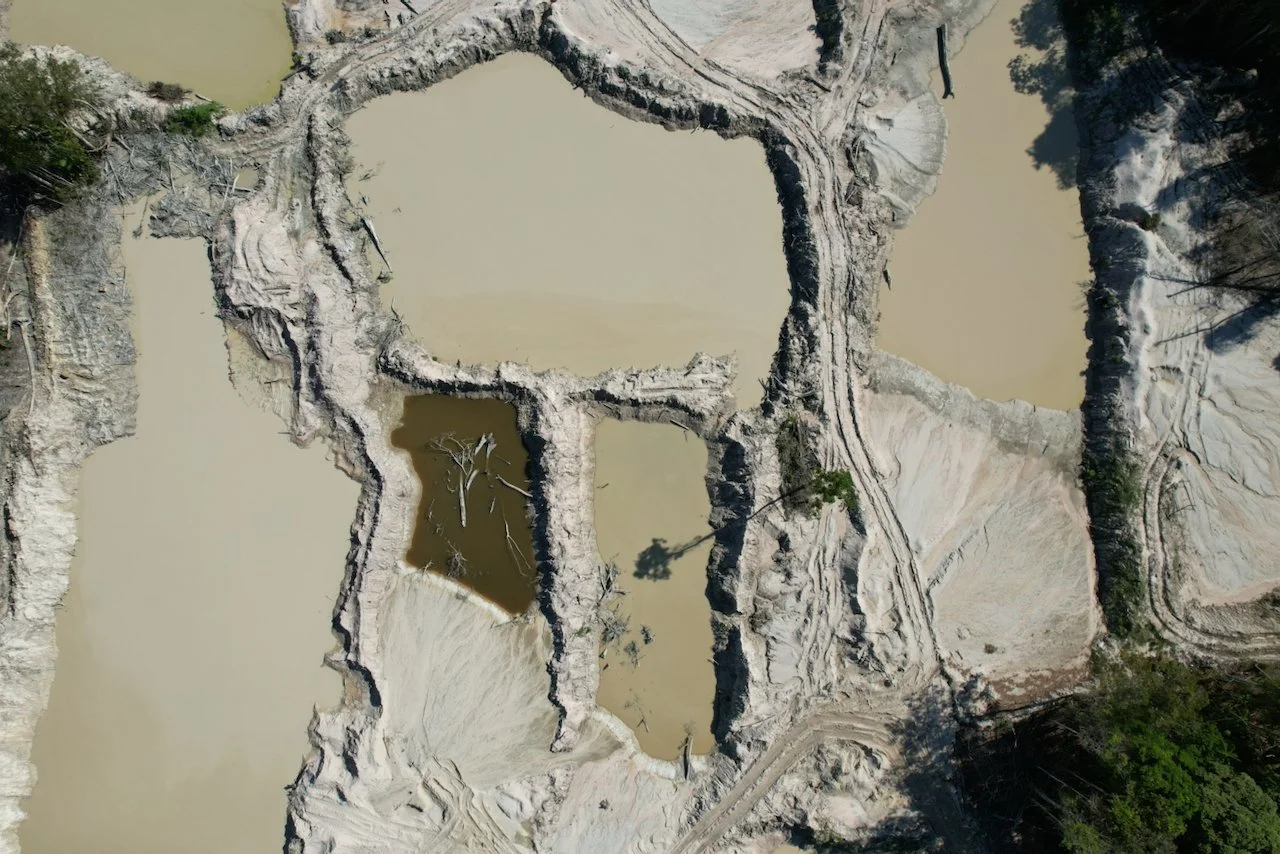Global Indigenous Peoples News Bulletin #5 (June 2025)
This bulletin devoted to Global Indigenous Peoples News, part of the Glocal Exchange project of Weave News, seeks to highlight some of the current issues from Indigenous communities in different parts of the world. The focus of the bulletin is aligned with the overall purpose of the Glocal Exchange project, which examines globalization through its impact from the perspective of local communities. It also supports the Weave News mission to “investigate and report about contemporary issues that are either underreported by establishment and other corporate media or reported in a way that excludes essential context, perspectives, and voices.” These are “issues that have a strong justice component and that reveal connections across communities, borders, struggles, and experiences.”
Indigenous lands and rights issues
This article from Grist mentions a new report from the Business & Human Rights Resource Centre that chronicles attacks and civil violations human rights defenders worldwide have experienced over the past decade. The report makes clear that these attacks will not decrease until broad agreements to adopt and implement protections for these activists are enacted. Such policies must be accompanied by legislation designating Indigenous stewardship of their land and requiring their involvement in project consultations. “The outsize scale of harassment and violence against Indigenous people,” the articles notes, “prompted the U.N. special rapporteur to release a statement last year making clear that ‘a just transition to green energy must support Indigenous peoples in securing their collective land rights and self-determination over their territories, which play a vital role in biodiversity, conservation, and climate change adaptation’.”
In Malaysia, a new report says the government ignores local and international laws that protect Indigenous rights. The report from Human Rights Watch concluded that “the Rumah Jeffrey community is being wrongly evicted, in violation of Malaysia’s laws, as well as in violation of their international rights as Indigenous peoples to consent to extractive projects on their land.” The article also emphasizes, “Various studies have shown that deforestation is a leading contributor to climate change, leading to less rainfall, more carbon dioxide in the atmosphere, and warmer temperatures. Research also indicates that protecting Indigenous land rights helps both save forests and protect biodiversity. But despite global pledges to stop deforestation, the problem continues to worsen.”
Sarawak Forest in Malaysia. (Photo: AP/Vincent Thion via Grist)
Meanwhile, writing for PassBlue, Subhanjana Das explores ongoing struggles for Indigenous rights under the government of President Javier Milei in Argentina. Faced with evictions, criminal and terrorism charges, as well as discrimination, the Mapuche’s struggle for autonomy centers on three issues: the need for the government to honor and respect the treaties signed with Indigenous communities; the return of their ancestral lands and territories; and political autonomy for their traditional authorities and institutions. According to the Mapuche people, Milei’s policies and actions deny all three.
In Brazil, the government has expelled illegal miners from two Munduruku territories in Pará state. They promised to offer economic alternatives to the communities, but for now, according to Munduruku leaders, community members count on only a few projects like chicken breeding and cassava flour production. The absence of income sources and public services makes illegal mining increasingly attractive to young Indigenous people. The article explains that some leaders see carbon credits as a viable economic alternative, while others denounce unfair contracts and violations of their autonomy.
Munduruku associations try to find alternatives to fish consumption, since illegal miners have contaminated the rivers with mercury. (Photo: Coletivo Audiovisual Wakborun via Mongabay)
This article from UN News reviews how the UN Human Rights Committee has found that Guatemala did not follow through on promises to resettle and compensate Mayan Peoples who remain forcibly displaced: “The Committee found that the 269 members of the K’iche’, Ixil and Kaqchikel Mayan Indigenous Peoples were violently uprooted from their traditional lands and forced to seek refuge in the capital, Guatemala City, in violation of the International Covenant on Civil and Political Rights (ICCPR).” This is a landmark decision that also considered the harm caused to succeeding generations.
Climate change and Indigenous land conservation
In India, Indigenous Adivasis are making their most significant effort yet to speak up for their community’s needs, advocating for Indian authorities to protect and restore their lands. “Women are leading the way. Muduli and others from 10 villages, with help from a local nongovernmental organization, have surveyed and mapped out resources that are dwindling and what needs restoring,” reports the AP. “The women have created what are known as dream maps, showing their villages in their ideal states. Their work could be critical in deciding where India’s efforts on climate change should be focused, as the country is working on a national adaptation plan.”
Meanwhile, a new study on participatory mapping concluded that when forest areas were considered culturally and spiritually significant, they tended to remain intact. The authors are calling for land title policy reforms across Latin America so that Indigenous stewardship will be recognized as a legitimate, proven form of land use. They hope the findings will lead to new frameworks that combine conservation, cultural heritage and food security.
Indigenous Peoples from various groups at a march during the Day of Mobilization of Indigenous Students in the center of Brasília, Brazil, in 2019. Indigenous Peoples stood together against budget cuts for the demarcation of Indigenous lands and public universities. Today, the struggle for land rights and the demarcation of Indigenous lands continues. (Photo: AP/Eraldo Peres via Global Citizen)
An article published by Global Citizen examines why defending the land rights of Indigenous Peoples protects our planet. The article argues that Indigenous territories are climate strongholds: “Forests in Indigenous areas have deforestation rates that are 2–3 times lower than in non-Indigenous lands and store significantly more carbon. This success comes from traditional knowledge: agroforestry techniques, low-impact hunting and fishing, controlled burning to prevent wildfires, and constant surveillance of illegal activity.” But despite their conservation leadership, Indigenous Peoples in the Amazon Basin face mounting threats in the form of illegal logging, gold mining, land grabs for soy and cattle production, and oil drilling.
InSight Crime reports that Indigenous communities in Peru’s Amazon face an escalating threat from organized crime, the lack of formal land titles and a government that often prioritizes corporate interests over community rights, which has further undermined Indigenous protection.
As competition for resources intensifies and local communities grapple with ever-increasing challenges like climate change, resource extraction, biodiversity loss, and the imminent development of urban spaces, this article in Nature discusses the value of partnering with Indigenous People for urban ecological restoration. By highlighting examples from Aotearoa, the paper shares the challenges and opportunities faced by Māori communities to care for nature and be part of the decision-making processes pertaining to nature and cities. The authors argue for the need to ensure that Māori communities are part of the solutions for nature’s care and protection for transformative urbanism to occur in Aotearoa and beyond.
Indigenous languages and ways of healing
As Indigenous peoples migrate, they take their languages with them. In an article for the BBC, Juan Pablo Pérez-Burgos analyzes how “The rise of these Indigenous languages in Latin American immigrant communities in the US is only beginning to be fully understood…and has important implications for the communities and their needs.” For example, the article notes, “Besides needing different interpreters, Mayans and other Indigenous immigrants face unique challenges that mestizo or white Latin Americans don't, and that often go unnoticed when all are covered under the blanket term ‘Hispanic’. Also, the growth of Mayan communities in the US has also given their ancient languages new platforms, like the radio, in local news outlets or even in classrooms.”
Turning to issues of public health, this article shows that while Indigenous nurses play a vital role in shaping more equitable, culturally grounded healthcare systems, their voices remain some of the least represented in the profession. According to the American Association of Colleges of Nursing (AACN), less than 0.5% identify as Native American, Alaska Native, Native Hawaiian, or Pacific Islander. The article shows that through their lived experience, community knowledge, and cultural leadership, they offer a kind of care that reaches far beyond clinical treatment. It reveals how “these nurses are not only preserving tradition and confronting systemic barriers, but also building futures where Indigenous people feel seen, respected, and valued. Their presence in healthcare is not only vital—it’s transformative.”
Finally, in an article for Mad in America, Justin Karter argues that Indigenous traditions reveal how Western psychology’s assumptions about mind, health, and healing may be too narrow to serve a diverse world. The author highlights a new article in American Psychologist that “makes the case that Indigenous healing traditions, long dismissed or ignored by mainstream psychiatry, offer crucial insights for reimagining mental health systems worldwide.” Karter also notes, “The paper was written by a transnational team of psychologists and anthropologists who bring both insider and outsider perspectives to their community-based research, and who call for a decolonial turn in mental health that takes seriously the cosmologies, ceremonies, and community-based knowledge systems of Indigenous peoples.”




